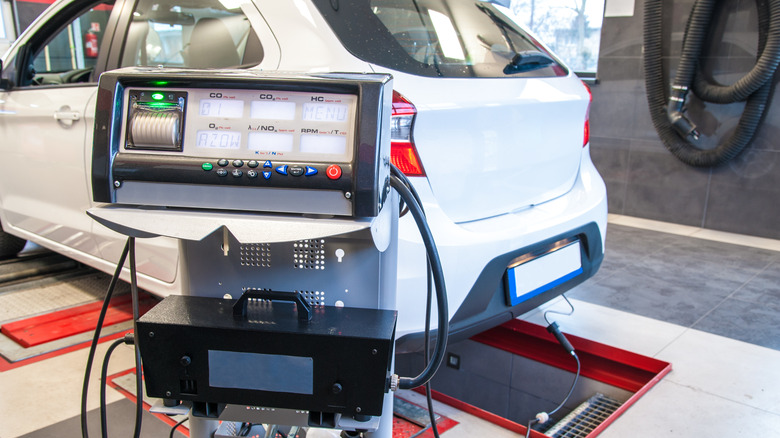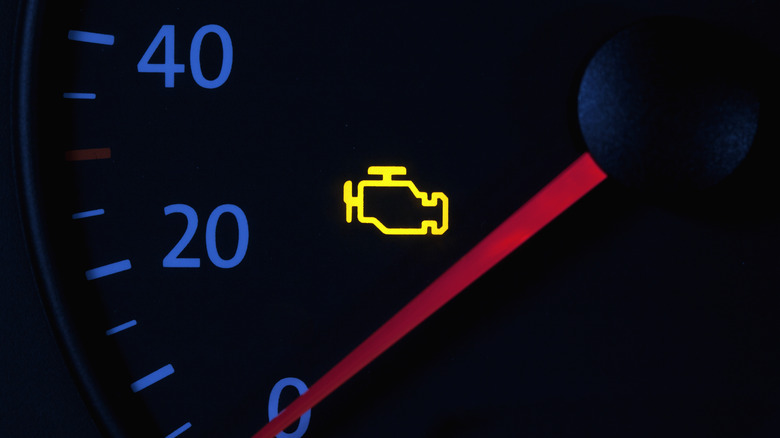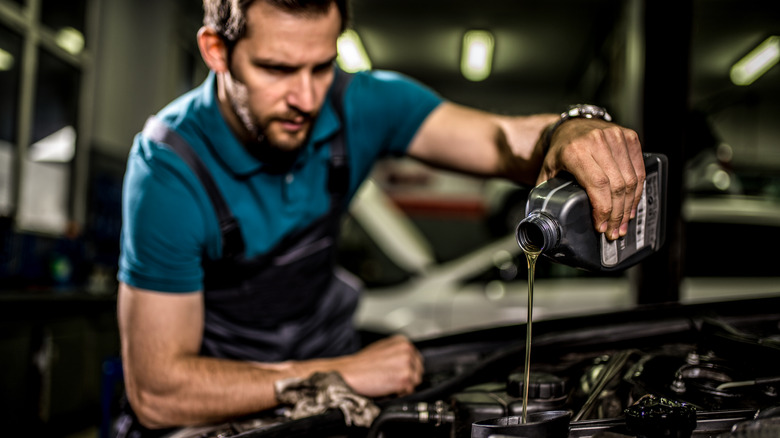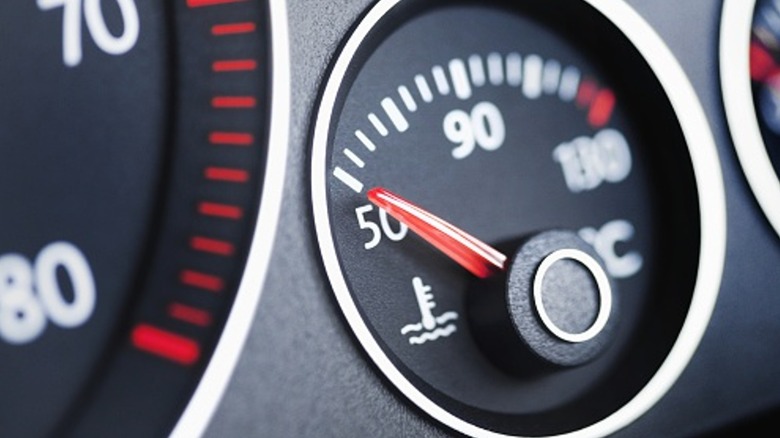3 Reasons Your Car Didn't Pass A SMOG Test (And How Much It Might Cost To Fix)
SMOG checks or emission tests exist due to the U.S. Environmental Protection Agency's (EPA) regulation on passenger vehicles. Each state sets limits of nitrogen oxides (NOx) from emitting past certain levels out of your vehicle. However, requirements, frequency, and circumstances for SMOG testing vary wildly between states. For example, Alaska doesn't require emissions tests, but on the other end of the spectrum, California, has one of the most stringent SMOG requirements of any state. Colorado has several RapidScreen roadside testing stations positioned alongside highway on-ramps that gather SMOG data and photograph your vehicle as you're driving. You'll then receive a renewal for registration in the mail that will indicate if you can skip a SMOG station, or must get an inspection.
If your car or truck sails through SMOG inspection with no issues, the experience is little more than a nuisance. But, if your vehicle fails the test, it can be frustrating trying to determine what caused the failure and how much it's going to cost you to fix. There are many factors that will cause your automobile to flunk the emission's test that include: a check engine light, lackluster vehicle maintenance, and a cold engine.
The check engine light and some likely culprits
You won't have to wait long to find out your vehicle didn't pass the SMOG test if the check engine light is lit up on the instrument cluster. As soon as the technician goes to start your car and sees the warning light, the test could end immediately. The check engine light could indicate any number of issues with your engine. A consistent warning light is one thing, but should you drive your car if the check engine light is flashing?
Your engine has many sensors which will trip the check engine light, however, one of the most common issues is a faulty oxygen sensor. Located in your vehicle's exhaust system, this sensor measures oxygen (O2) levels and if functioning improperly, can cause poor performance, less efficiency, and disqualifying levels of NOx. Most sensors are under $100, and if you hire a mechanic to do the job, you'll likely pay around $150 for labor.
The catalytic converter, which transforms the unhealthy byproducts of the combustion engine, into something less toxic, can also cause the check engine warning to light up. This component is part of your vehicle's exhaust and has a profound impact on performance. A failing catalytic converter can also cause bad gas mileage, a sulfuric odor, and a lackluster engine response, among other symptoms. A new catalytic converter will run between $900 and upwards of $3,000 depending on your car's model and the quality of the part.
Poor vehicle maintenance
It's always a good practice to properly maintain your vehicle by checking fluids, regularly changing the oil, and replacing the air filter. Beyond just lengthening the lifespan of the car, regular maintenance can also save you from failing an emissions test. While there are several complex issues that could cause your automobile to flounder during a SMOG inspection, there are also some basic ones, like dirty oil.
Oil is the lifeblood of your engine and to function optimally, it must be changed routinely. Not only does aged oil not protect and lubricate at its full potential, the fumes can work their way into parts of the engine, coloring the emissions results. If you take your car into a shop, you can expect to pay between $131 and $141 for an oil change, depending on your area and the type of motor oil brand you choose. Don't forget, popular oil filter brands rank differently, so consider your options carefully.
The engine isn't warmed up
The moments just after starting a cold engine produce up to 80% of certain air pollutants caused by automobiles, according to a study published on Science Direct. It takes time to reach the "proper fuel mixture and combustion levels." So, if you don't allow your car to run for 20 minutes prior to a SMOG check, you could end up failing.
A cold engine doesn't only effect combustion, it also doesn't offer the catalytic converter time to warm up and work properly. In order to receive a valid and true emission check result, the catalytic converter must be hot, indicating its functioning optimally. Fortunately, this is an easy problem to remedy prior to testing your vehicle emissions. Just ensure you drive your car around for the better part of a half hour before reaching the SMOG shop. Otherwise, you may end up with a false failure and still be required to render payment. The average cost for a SMOG check in the U.S. is $30 on the low end, and up to $60 on the high end. To help prepare for your next emission's check, avoid bad habits that are ruining your car's engine.



